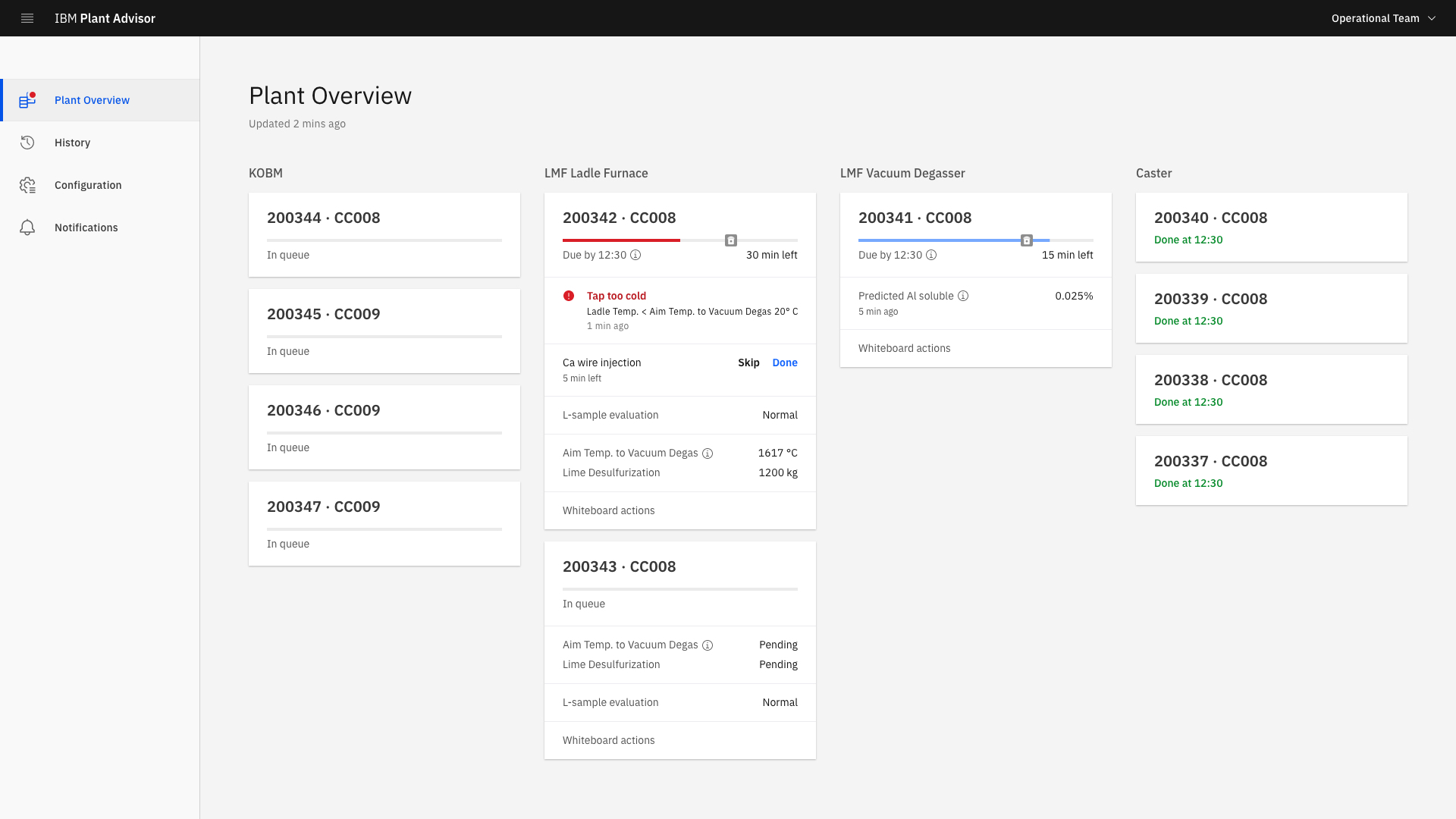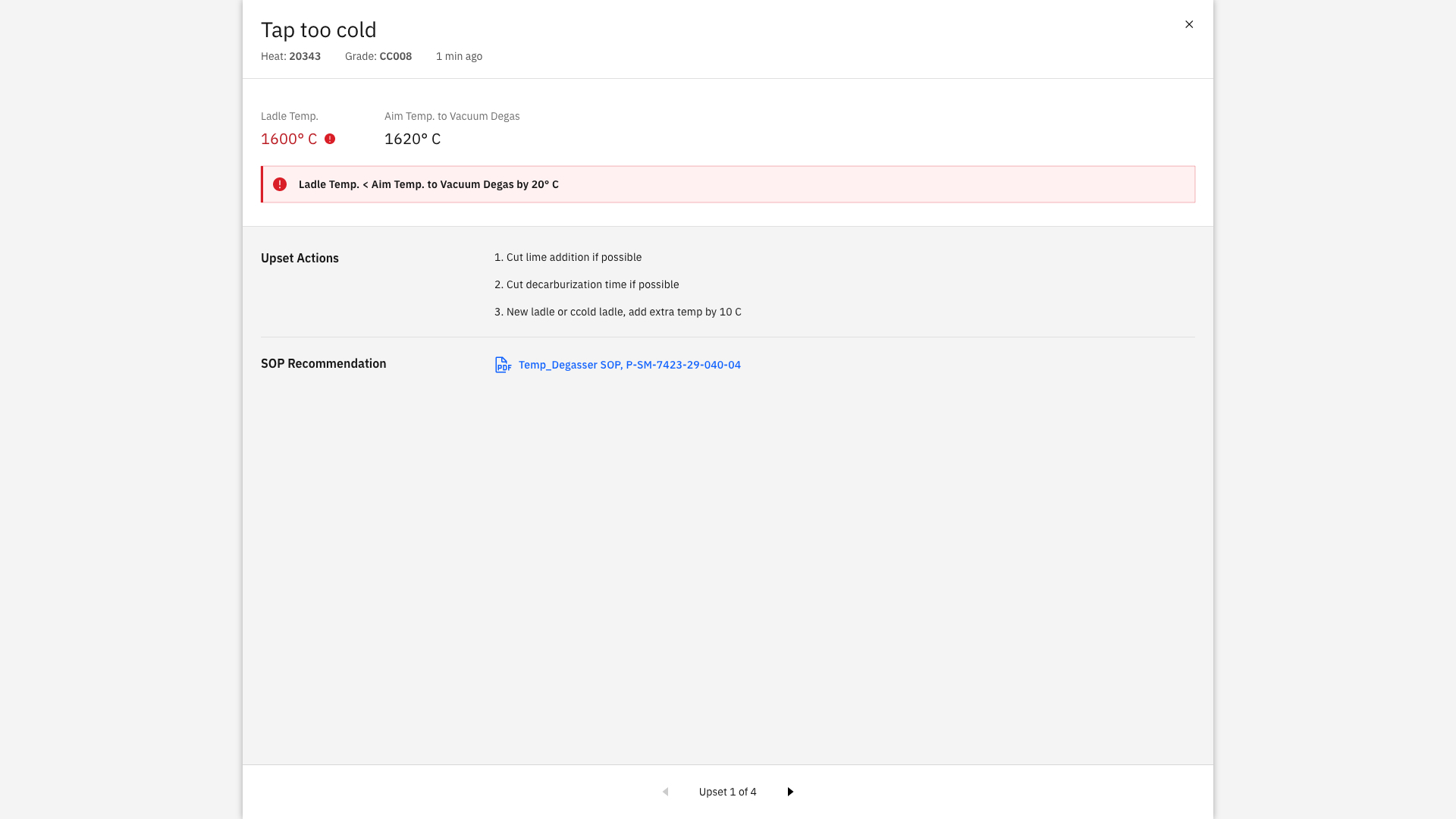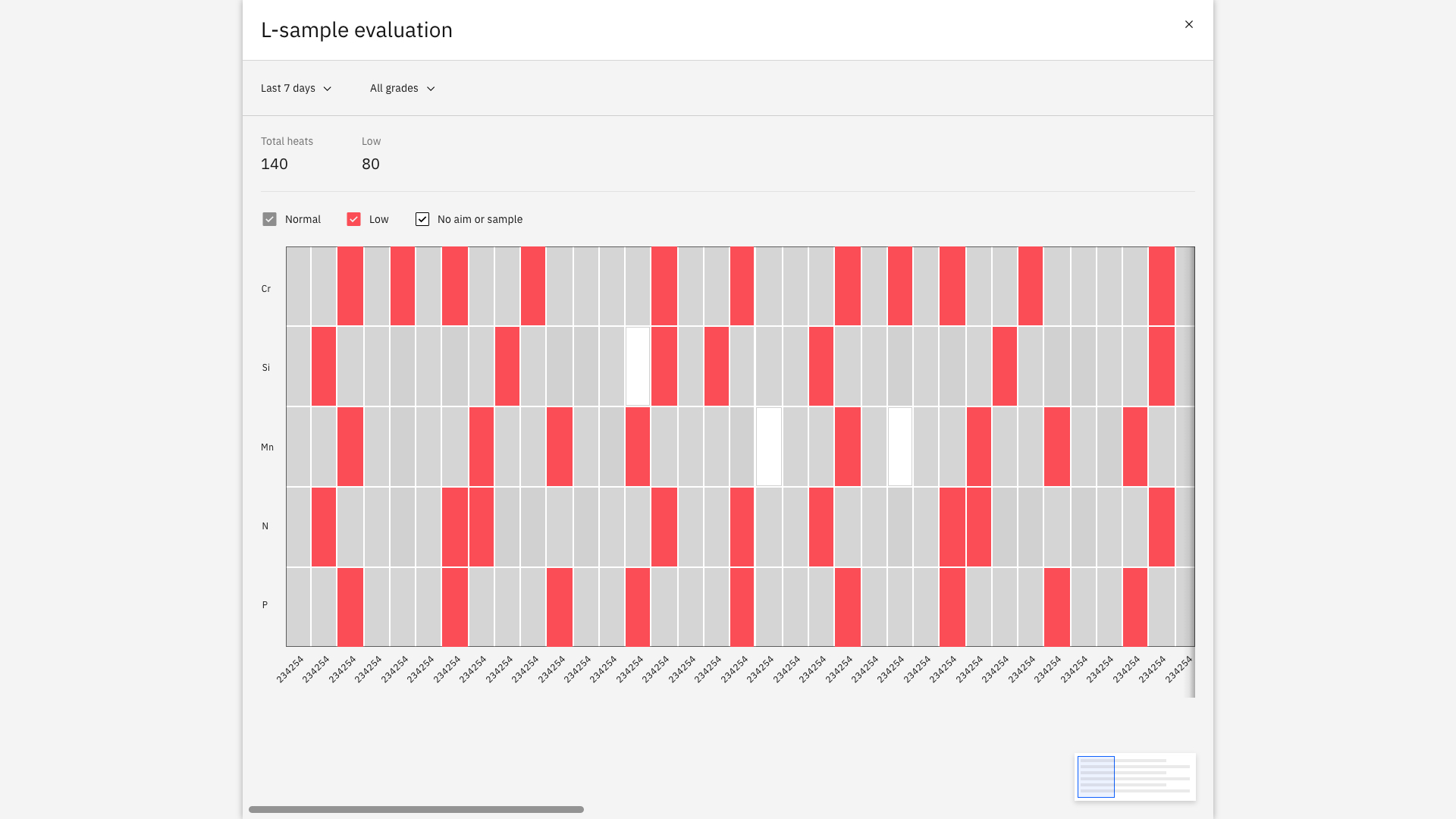IBM
IBM Plant Advisor
CLIENT
Role
UX / UI Designer / Lead
Summary
IBM Plant Advisor is an enterprise solution for Manufacturing industries that enables process control and optimization.
The artefacts below are examples showing how it works for the steelmaking industry. However, the solution is applicable to other sectors like chemical, automotive & aircraft, machinery building where production follows a strict process with constraints, that includes different tasks, different work crews, different locations and so on.
By providing real time and historical insight into the production/assembly data, the supervisors (key users) are able to make better decisions to help reduce costs, delays, improve production efficiency by optimizing processes on the fly.
As a project it was a challenging and rewarding mission. Process control and optimization is a vast subject, however at its core it's about task management and data tracking. One of my goals was to mask the complexity top-to-bottom, so process supervisors can spot process issues, explore the data effortlessly, see real time analysis and predictions, be able to search for quick solutions, and receive recommendations.
I designed the experience using the IBM's Carbon Design System with a combined set of technologies like Machine Learning, IBM Watson Discovery, IBM Watson Natural Language Understanding, IBM Cloud and Data Analytics.
As a result ArcelorMittal Dofasco, Canada’s leading steel producer and one of top advanced manufacturing enterprises in North America, was the first to successfully adopt IBM Plant Advisor for steelmaking.
The artefacts below are examples showing how it works for the steelmaking industry. However, the solution is applicable to other sectors like chemical, automotive & aircraft, machinery building where production follows a strict process with constraints, that includes different tasks, different work crews, different locations and so on.
By providing real time and historical insight into the production/assembly data, the supervisors (key users) are able to make better decisions to help reduce costs, delays, improve production efficiency by optimizing processes on the fly.
As a project it was a challenging and rewarding mission. Process control and optimization is a vast subject, however at its core it's about task management and data tracking. One of my goals was to mask the complexity top-to-bottom, so process supervisors can spot process issues, explore the data effortlessly, see real time analysis and predictions, be able to search for quick solutions, and receive recommendations.
I designed the experience using the IBM's Carbon Design System with a combined set of technologies like Machine Learning, IBM Watson Discovery, IBM Watson Natural Language Understanding, IBM Cloud and Data Analytics.
As a result ArcelorMittal Dofasco, Canada’s leading steel producer and one of top advanced manufacturing enterprises in North America, was the first to successfully adopt IBM Plant Advisor for steelmaking.
Plant Overview
During UX Research it became obvious that the projected experience would have to be flexible and scalable to support different cases. So I designed the Plant Overview to be modular and configurable. The image below shows 4 stages with different produced units at different states in the production, however there can also be more production stages (aka 'swim lanes.')
Process Issues
Real-time Changes
Process Steps
Feedback
Technician (user) feedback is important to train the machine learning model, and to ensure the accuracy of the recommended manufacturing steps. Positive feedback reinforces the model, while negative feedback is reviewed and processed, then fed back into the model to improve it.
History View
History view provides insight into past data, prediction accuracy for delays, production output and audit trail. For this particular part of the solution I collaborated with Data Scientists and Analytics Experts at IBM, for a mature perspective on data visualization so the experience is digestible by Process Supervisors.
Search
Below is a prototype of the 'Search' experience, a central user need and easily accessed from all main views. It's designed to be intuitive, based on natural language, with suggestions and simple filters.



















